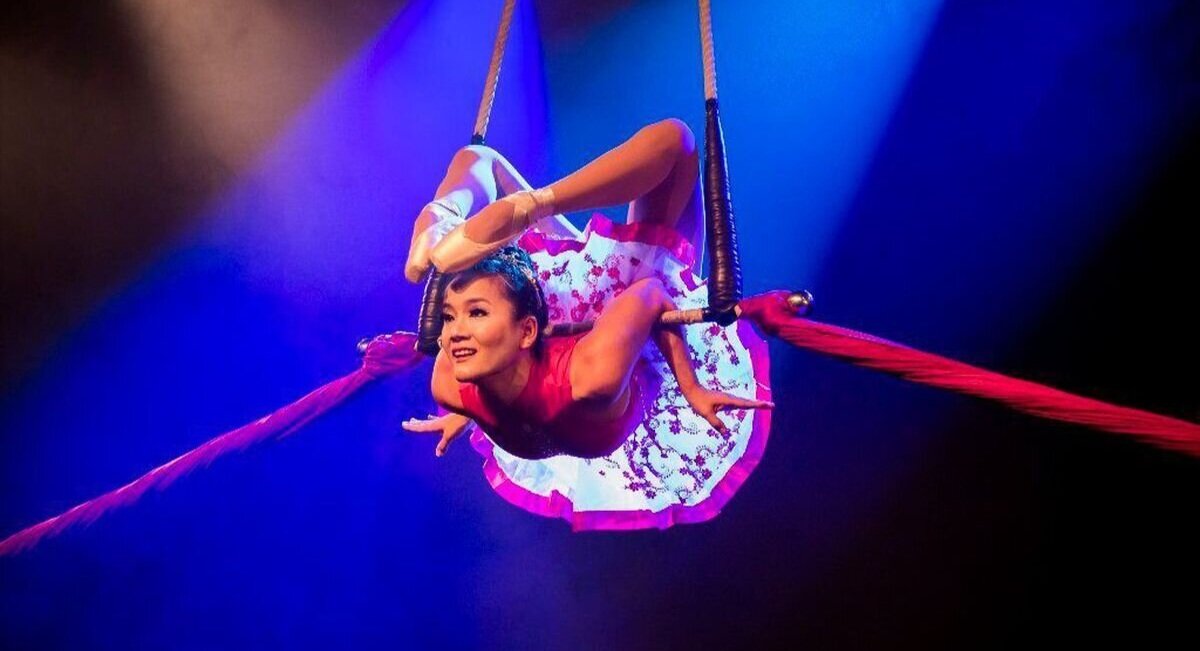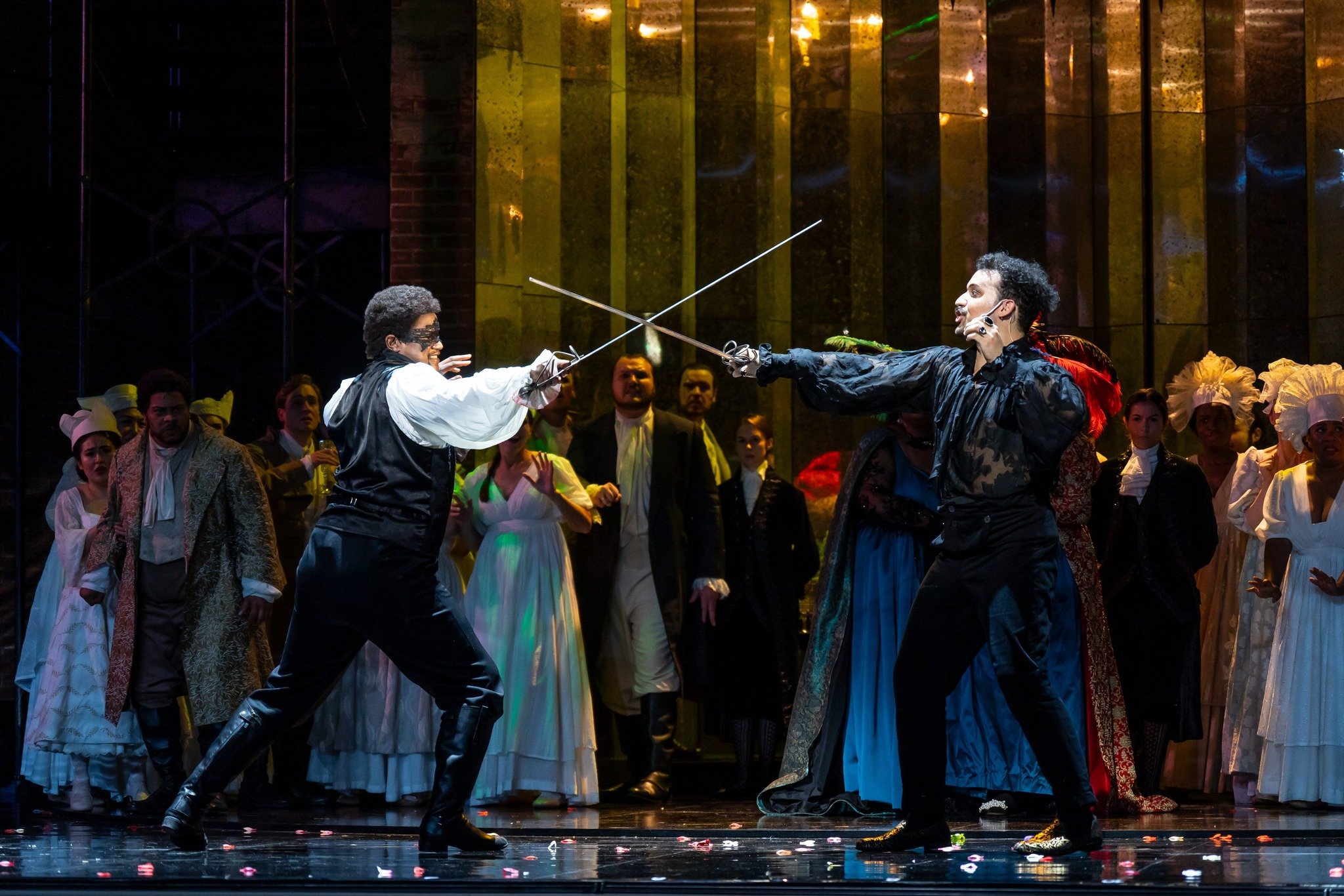Richmond Ballet Triumphs at Wolf Trap

Poor sound design can’t derail a night of great dancing
Another highbrow evening at Wolf Trap, another near-sellout. Wednesday evening’s performance by the Richmond Ballet (along with the City Choir of Washington, the Richmond Symphony Chorus, and the Richmond Symphony) brought people out in droves, house and lawn full. Why, given such support, the venue offers less than a handful of such events over nearly four months remains an irritating puzzle.
But the evening was a triumphant success, with the usual caveats about sound design in the Filene Center. First up was the premiere of Thrive, by Ma Cong (the Richmond Ballet’s Associate Artistic Director), set to an eclectic score by the British composer Oliver Davis; a suite of miniatures evocative of Vivaldi, Arvo Pärt, neo-classical Stravinsky, and John Adams, with a tango number thrown in (Daisuke Yamamoto was the elegant violin soloist). Ballet is of course abstract, but it helps to have something for an audience to hold onto, however nebulous. Between the everything-goes score, and the somewhat generic choreography (mostly familiar Robbins/Taylor stuff), it was hard to fix an aesthetic polestar for the piece. There were two nice, slow love duets, and an impish trio implying primping on TikTok, but the larger numbers felt a bit directionless.
The evening’s principal offering was John Butler’s classic (1959) setting of Carl Orff’s Carmina Burana which entered the company’s repertoire 35 years ago. It is a grand piece, for sure, with interesting costuming implying a journey through earlier centuries. The dancers first appear in monastic robes as though commencing a ceremony, but they then remove them to reveal skimpy covering by only leaves, à la cavemen; later donning minimal tunics in a quasi classical-greek style, and finally ending up in what looks like medieval garb (the time period when the poems Orff set were written). The choreography itself rarely reflects the texts; the “Roasting Swan” is an acidic duet between a couple with issues, the bright, energetic steps during the drinking song are anything but blowsy, and the rigorous dancing during the final numbers with their erotic texts implies very little along those lines. And there are some jarring sections when sharp, fast movements are set to achingly-slow music. Still, Butler’s piece has certainly stood the test of time, with a vocabulary that is still original and wide-ranging.
My sciolistic take on the Richmond Ballet is that it has a number of first-class soloists, as good as you’ll see anywhere. The corps sometimes lacks the tightness and pop of the New York City Ballet and a couple of others, but the Richmond Ballet is startlingly good.
Conductor Erin Freeman somehow held things together; a remarkable achievement given that the choir was split in half on either side of the cavernous Filene Center; how they even heard one another was a mystery. Only in the fastest numbers like Veni, veni did things get momentarily scary. But, as before, the sound design was the rain on the artistic parade. Through poor mic placement and mixing the double-basses were louder than the trumpets, violins and percussion inaudible throughout, and the solo singers’ volume was almost painful. Wolf Trap really needs to attend to this, as it again marred an otherwise-marvelous evening.





